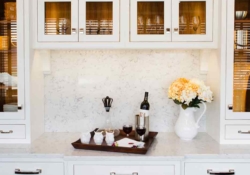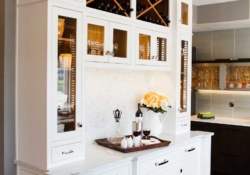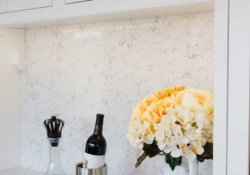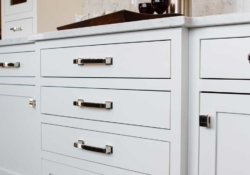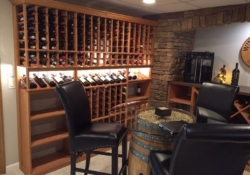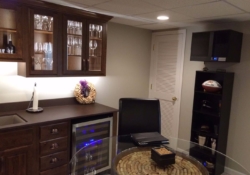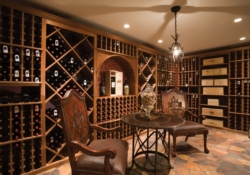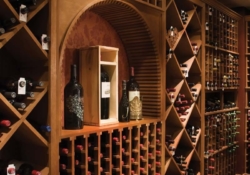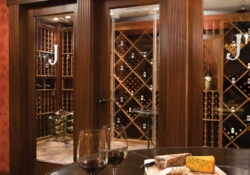Nothing suggests luxury living more completely than a wine cellar. Images of redwood racks along the walls holding dozens or perhaps hundreds of bottles can transport your imagination to a top New York restaurant or Northern California winery.
Here in Pennsylvania, despite the state’s arcane liquor laws, there is strong interest in spaces and dedicated rooms that focus on the grape. When clients ask me, “how much does a wine cellar cost?” I smile and suggest that there’s no limit to how much can be spent. That doesn’t mean, however, a wine-lover on a limited budget can’t create that special tasting space.
In fact, it’s fairly common that in a new kitchen or living space we end up designing custom cabinetry for an owner’s wine collection, no matter how large or small.
As you begin considering that special wine space or room, ask yourself the following questions.
- How many bottles do I want want to store?
- What types of storage will I want? (Display, case, splits or magnums?)
- Will the room be refrigerated?
- Will I be tasting in the room with guests?
Wine Cabinetry Integrated Into a Kitchen or Living Space
Even if you don’t have the space or budget to create a wine cellar or room, there are many ways a thoughtful kitchen designer can integrate your passion for wine into a remodeled space.
A wine-lover can start with something as simple as base cabinetry topped by a granite or other solid surface that’s complemented by wall-mounted, cabinetry for storing glassware. This simple solution is the perfect way to display a few bottles while also serving as multi-purpose storage. By adding a small, built-in wine fridge to the base cabinetry you’ve got the perfect place to open and decant a bottle or two of your favorite Bordeaux!
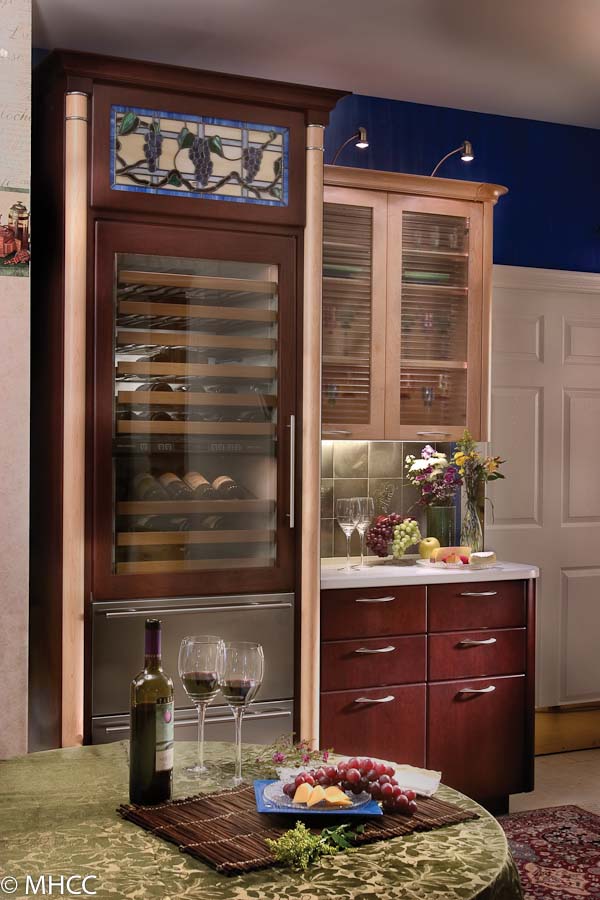
Leveraging this same concept you can up the “Wow” factor by incorporating a floor-to-ceiling butler’s pantry into your kitchen or open living space design. More than a place to store silverware and holiday items, a butler’s pantry can serve as an entertainment hub, offering a place to set out drinks, dessert and appetizers.
One of our favorite takes on the butler’s pantry is a custom-designed wall of cabinetry that utilizes a tiered, or stacked approach. We build the foundation of the butler’s pantry with base cabinetry that has a distinct, furniture quality to it. With granite or engineered stone on top, the base is the foundation from which the more delicate upper cabinets rise. Because the upper cabinets are set back from the front of the base, a sense of verticality and drama is created. This architect’s “trick” draws your eye upwards from the massive base to the more delicate glass fronts of the upper cabinets and finally to the flourish of trim that ties the cabinetry into the ceiling.
Our Mechanicsburg showroom features just such a design in a beautiful white butler’s pantry.
A Wine Cellar in Your Basement
The chances are if you live i a single family home in Central Pennsylvania you’ve got a basement. Cool in the summer and more humid in the winter, a basement can be the perfect place to create a space to store and appreciate your wine collection.
Because you’re likely not restricted by the design or cabinet choices made in a kitchen, a basement wine room can utilize the traditional materials, design and details of “authentic” wine cellars.
For example, nothing says “wine cellar” more than rows of horizontally stacked bottles cradled by redwood slats, or an arched wall of stone that frames case storage or a table for wine tools. Often inappropriate in a kitchen, the basement is the perfect place to embrace these traditional elements.
Mother Hubbard’s recently completed just such a basement conversion. We transformed the lower level of a Harrisburg home into a combination wine cellar, tasting area and entertainment space. In addition to the iconic wall storage for bottles, we designed base cabinetry for the adjoining walls with a full sink, upper cabinets for glassware storage, and a feature wall framed by a stacked-stone veneer.
Refrigerated Rooms Do a Wine Cellar Make
Probably the ultimate step for a wine aficionado is a dedicated, refrigerated room that can store hundreds of bottles and cases. Reserved for the most expensive collections and demanding wine-lover, a refrigerated room can maintain bottles at the proper temperature and humidity for decades, insuring proper aging and maximum enjoyment.
Most wine experts suggest a constant temperature of 56 degrees and humidity in the 55% to 75% range. This requires the construction of a purpose-built room with mission-specific design, materials and equipment. For example, you’re not going to use carpet or wood in a refrigerated cellar, and hot halogen or incandescent lights are to be avoided.
Indeed, if your aspiration is to create a refrigerated wine cellar you will need to assemble a team of experts with special skills in construction, refrigeration, ventilation and custom cabinetry. A few years back we were fortunate to be a part of such a team, designing the cabinetry for the Mechanicsburg refrigerated wine cellar and adjoining tasting room that you see below.
Just Enjoy the Wine!
No matter your budget, you can create a special room, space or nook that will enhance your passion for and enjoyment of wine. After all, what’s most important is the wine itself and the people with whom you share it. I believe it was noted wine author Jancis Robinson who suggested that, “Wine is an expression of place and time.” It’s a reflection of the earth, the weather, the water and the hands that tended to the vine. Once the bottle is uncorked, the glass poured and the first sip taken, nothing else really matters now does it. Cheers!- 2024 Kitchen & Bath Design Trend: Texture - April 9, 2024
- Why We Love Microwave Drawers for a Kitchen Remodeling Project - March 2, 2024
- Kitchen Corner Cabinet Storage Solutions - March 16, 2023


